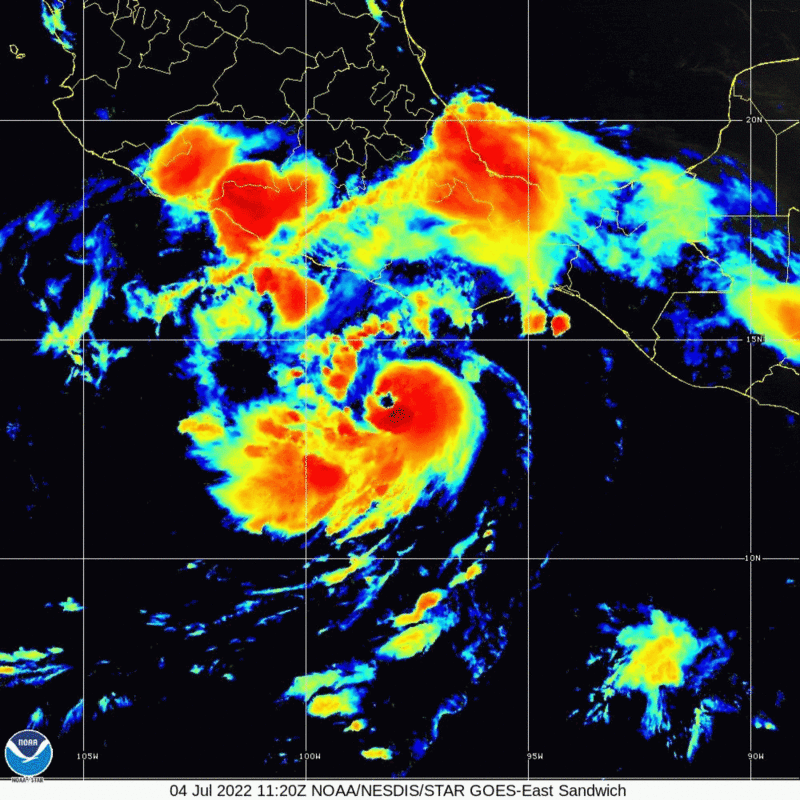Hurricane Bonnie no longer exists — but after forming as the second named tropical cyclone in the Atlantic Basin, it may have traveled more than you this year on a journey which altered the record books.
Hurricane Bonnie Finally Ends — In a Unique Way.
All within the timeframe of a mere 24 hours, what was to eventually become Tropical Storm Bonnie:
- Formed as Potential Tropical Cyclone Two as one of the southernmost tropical cyclones ever to develop, in the southwestern area of the Caribbean Sea approximately 250 miles north of French Guiana.
- Recorded its first landfall — before it was named — on Trinidad and Tobago, which rarely are affected by tropical cyclones.
- Traveled over the Paraguaná Peninsula in Venezuela and the Guajira Peninsula of Colombia, as tropical systems rarely travel over portions of land of South America.
- Passed through Central America after an unusually rare landfall near the border Nicaragua shares with Costa Rica on Friday, July 1, 2022 — its path was one of the southernmost tracks of hurricanes in the Atlantic Basin in recorded history; maintained its tropical circulation and characteristics; and emerged into the eastern Pacific Ocean while retaining its name instead of having it changed to Darby, which eventually formed and became its own hurricane.
The names for storms which are assigned to the Pacific basin are different than the names for storms which are assigned to the Atlantic basin. According to this Wikipedia article pertaining to what are apparently known as Atlantic–Pacific crossover hurricanes — and at least 19 of them have reportedly existed since 1842 — prior to the year 2000, “storms were renamed after crossing from the Gulf of Mexico into the Eastern Pacific. At the 22nd hurricane committee in 2000 it was decided that tropical cyclones that moved from the Atlantic to the Eastern Pacific basin and vice versa would no longer be renamed. Hurricane Otto in 2016 was the first storm to cross from one basin to another to apply under this rule.”
Tropical Storm Bonnie is the second Atlantic-Pacific crossover tropical cyclone since that decision was supposedly reached — and therefore, its name has not changed — unlike when a tropical cyclone named Grace in the Atlantic Ocean basin became Tropical Storm Marty in the eastern Pacific Ocean basin after crossing the Yucatan Peninsula last year in August of 2021…
…but Tropical Storm Bonnie was not done yet.
After the tropical cyclone emerged into the eastern Pacific Ocean and kept heading west, it eventually became a powerful Category 3 hurricane — which means that Hurricane Bonnie became only one of three tropical systems in recorded weather history to cross over from the Atlantic Basin and become a major hurricane — on the morning of Tuesday, July 5, 2022.
The maximum wind speed of Hurricane Bonnie of 2022 tied the record with the maximum wind speed of Hurricane Bonnie of 1998 of all tropical systems in the Atlantic Basin with that name.
By the time Hurricane Bonnie became a post-tropical system on Saturday, July 9, 2022, its track extended greater than 6,600 miles. That distance is so long that it is equal to approximately 25 percent of the circumference of planet Earth…
…and because most of that distant track was in a relatively straight line, Hurricane Bonnie — which had already moved farther west than any other Atlantic-Pacific crossover storm in recorded weather history — narrowly missed being the first tropical cyclone to have been active in three basins: the Atlantic Basin, the Eastern Pacific Basin, and the Central Pacific Basin had it only ventured greater than another ten degrees away further west.
Final Boarding Call
This tropical cyclone named Bonnie was quite unusual in so many ways that it led a very interesting existence; and I felt it needed an article devoted to it in tribute — if only because I found it very interesting.
Source: The National Oceanic and Atmospheric Administration of the Department of Commerce of the United States.

